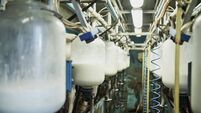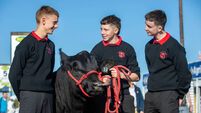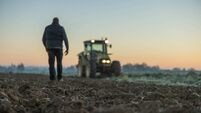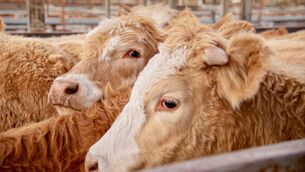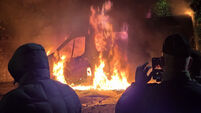Grass keeps our cows in the black
There is optimism in the sector here due to strong markets, long-term global demand forecasts, and recognition of the potential to create Irish dairy exports and jobs.
It’s built also on the competitiveness of Irish grass-fed milk production — and that could be the jewel in the crown of the Irish industry.
While many continental EU farmers dairy farmers go further into the red because rising feed bills make milk too expensive to produce, grass keeps Irish cows in the black — and keeps the consumers the industry depends on happy.
That’s why FrieslandCampina, the number one dairy co-op in the world, has decided that all 15,300 dairy farms supplying them in the Netherlands, Germany and Belgium, have to keep their cows in the field.
They are responding to signs that consumers want to see cows grazing, because they improve the landscape and give dairy farming a better image.
In the Netherlands, up to 20% of dairy farmers keep their cows indoors all year round.
FrieslandCampina say 80% of their suppliers let cows graze outdoors, and they aim to at least maintain outdoor grazing at that level, and make it the standard for suppliers, because of how important it is for the perception and acceptance of milk as a product and of dairy farming as a sector. The huge co-op, which employs 20,000 in 24 countries, says the authorities in the Netherlands, Germany and Belgium have to change certain environmental and climate objectives which outdoor grazing is at odds with.
With many FrieslandCampina suppliers milking 200 cows or more, often using milking robots, or housing cattle at some distance from their grazing fields, putting cows out to graze is difficult.
But it seems that continental consumers are unhappy to see massive, ugly sheds, silos and manure stores sprouting up to accommodate expanding herds.
And “the consumers are always right”, is FrieslandCampina’s motto as it launches its 2020 strategy. But one of the many challenges the strategy holds for suppliers is that young farmers on the continent know little about managing grassland, and the flexibility to adjust to changing weather conditions.
Grassland farming “on the cheap” may have slowed milk production in Ireland in the 1980s, but there is a chance now to expand on the strength of its competitiveness, and to market our industry on the strength of its favourable image with consumers.
At the moment, FrieslandCampina suppliers are attending more than 100 workshops to learn how to farm more like the Irish. Not just grazing, but sustainability in the entire production chain for dairy products is what they are learning about. Friesland-Campina’s objective is climate neutral growth in milk production and processing.
This includes health and welfare of cows, an area where Irish farmers can match them. But it also includes solar panels and biodigesters, and dairy farmers supplying energy to milk processing factories or residential areas.
The objective is for dairy farms and dairy businesses to be energy-neutral in 2020. “Milk is the green engine,” will be FrieslandCampina’s expansion motto.
It brings home to the Irish industry that their competitors won’t be standing still, but it is also clear that Ireland has the foundations for a consumer-friendly 2020s’ industry well established



